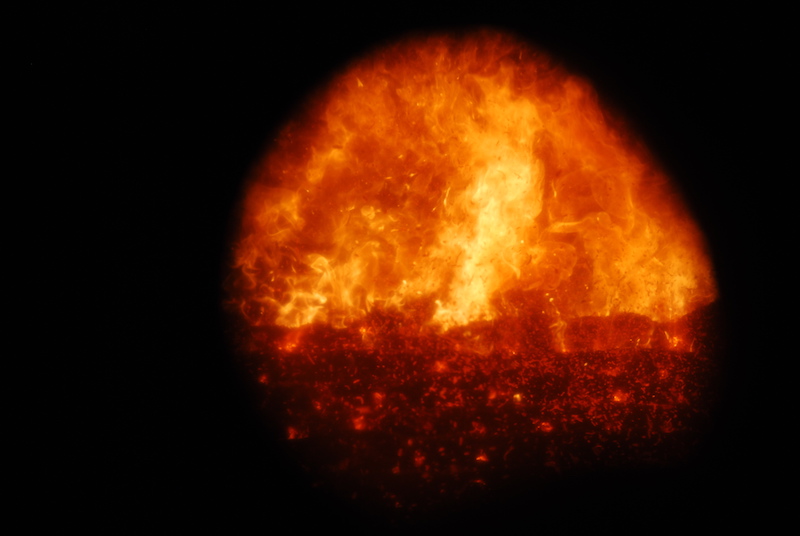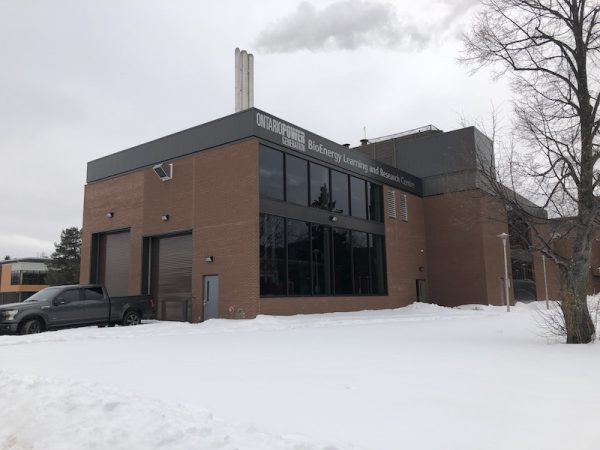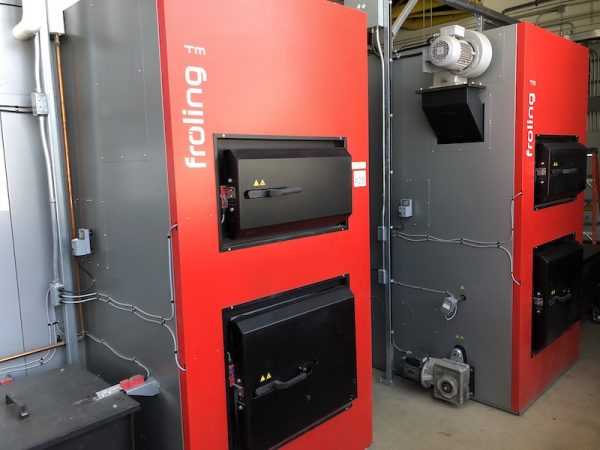
Ontario’s outdated emissions factors preventing use of bioheat systems
February 6, 2020
By FPInnovations
 Photo: Annex Business Media
Photo: Annex Business Media Modern wood heating technology could help Ontarians drastically lower their heating costs and cut carbon emissions. Unfortunately, outdated emission factors are hindering the issuance of environmental permits for bioheat systems in Ontario.
These wood-based bioheat systems use renewable and low-carbon biofuels such as wood chips, wood pellets, and cordwood to produce energy for space and for hot water heating in homes, businesses, and public buildings. Their reliability and efficiency allow them to supplement or even replace current fossil fuel or electric heating systems with local, sustainably sourced, economical, and renewable solid woody biofuels. Furthermore, there is no risk of spill contamination since the fuel used in these systems is solid wood, unlike the risks that arise from using fossil fuels such as diesel or fuel oil.
The setback
Technology advancements over the past few decades have dramatically reduced air pollution emissions from wood combustors. Their emissions have actually become on par with fossil fuel systems.
For some bioheat systems to get an air permit – such as those installed in commercial or institutional buildings – the government of Ontario’s robust air emissions regulations require that new systems meet strict air emissions standards. The problem is that the current process relies on outdated air emission factors of wood-fired combustors from the 1980-90s that over-estimate air emissions because they are not based on present-day information. The outdated emission factors originate from the United States Environmental Protection Agency (U.S. EPA) and do not reflect the low emissions of modern wood heating systems.
The impact of using outdated emission factors in provincial permissions is that modern bioheat systems that would deliver a reduction in carbon emissions and in operating costs aren’t being permitted.

The BioEnergy Learning and Research Centre wood chip boiler room, wood chip storage, and teaching facility at Confederation College.
The real test
Confederation College’s BioEnergy Learning and Research Centre in Thunder Bay, Ont., installed a new wood-based heating plant in 2015 to heat 400,000 square feet of institutional space. The demonstration system uses wood chips from the City of Thunder Bay’s urban forest as fuel.
To demonstrate the low emissions of modern wood-fired combustors, the BioEnergy Learning and Research Centre partnered with Ontario’s Ministry of Environment and Climate Change (now Ministry of Environment, Conservation and Parks) as well as with Ontario’s Ministry of Natural Resources and Forestry and CanmetENERGY of Natural Resources Canada to undertake an air emission testing and research program. The goal of the project was to measure and document the true emissions from the modern bioheat system installed at the Centre.
Shocking results!
The research testing program measured in-stack emission rates of four key contaminants: acrolein, total suspended particulate (TSP), benzo(a)pyrene, as well as dioxins and furans. The results were published and compared to existing information published by the U.S. EPA that are currently being used in Ontario’s permitting process. The emissions from Confederation College’s BioEnergy Learning and Research Centre bioheat system were dramatically lower – between 79.5 to 98.7 per cent lower than what is currently published by the U.S. EPA for wood combustion systems!

500 kW Wood Chip Boilers at Confederation College’s BioEnergy Learning and Research Centre. Photo courtesy Biothermic Wood Energy Systems.
Urgent need for accurate emission factors
Modern bioheat systems are being denied permits in Ontario based on the latest provincial air standards that were implemented in 2016. In fact, if Confederation College’s BioEnergy Learning and Research Centre was to try to obtain a permit for their system today with current processes that rely on air emission factors from the U.S. EPA, their system would be denied a permit, even though their system’s actual emissions are significantly lower than the current Ontario Regulation limits.
Accurate emission factors from modern bioheat systems is urgently needed. Comprehensive testing of a range of bioheat systems using a variety of clean, modern biofuels such as cordwood, wood chips, and pellets would certainly show that air pollution emissions are much lower than previously thought. The new information could be incorporated into the current permitting process leading to more bioheat systems that are efficient, low-cost, low-carbon being installed in Ontario.
Interested in initiating a bioheat project? The first step is to become familiar with bioheat. The bioheat community in Ontario is knowledgeable and passionate. Those who want to join will be welcomed and well supported. A Solid Wood Bioheat Guide for Rural and Remote Communities in Ontario produced by FPInnovations will be published in late winter 2020 and will be an excellent resource. Stay tuned!
For more information, please contact Glen Prevost at glen.prevost@fpinnovations.ca.
This article is part of the Bioheat Week 2023. Read more articles about bioheat in Canada.
Print this page